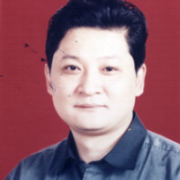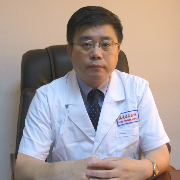- 胰腺内分泌肿瘤的治疗
- 胰头癌的治疗
- 腹部切口疝的治疗方法
- 乳腺导管内乳头状瘤的治疗
- 疝气治疗方法
- 甲状腺癌碘131治疗的认识误区
- 乳腺纤维腺瘤的治疗
- 乳腺增生的治疗方法
- 甲状腺癌治疗方法
- 甲状腺结节的治疗方法
- 甲状腺髓样癌的治疗
- 甲状腺癌的手术治疗规范
- 亚急性甲状腺炎的治疗
- 甲状腺癌术后随访指南
- 甲状腺癌骨转移的治疗
- CA153与乳腺癌
- 服用三苯氧铵会产生何种不良反应...
- 甲亢的治疗
- 小儿疝气的治疗方法
- 切口疝的治疗方法
- 单纯性甲状腺肿的治疗方法
- 甲状腺囊肿的治疗方法
- 乳腺的解剖、生理
- 乳腺自我检查
- 日常生活中如何进行乳房保健
- 乳腺导管内乳头状瘤的治疗
- 复发、转移乳腺癌的治疗
- 乳腺癌的化学治疗(化疗)
- 乳腺癌的放射治疗
- 乳腺癌的预防方法
- 乳腺癌的病因
- 甲状腺功能减退症的治疗方法
- Modified Radica...
- 口服华法令的患者术前准备要点
- 慢性淋巴性甲状腺炎(桥本氏甲状...
- 甲状腺结节预防方法
- 甲状腺癌的手术治疗
- 乳腺癌改良根治术的手术技巧
- Operative Techn...
- 复发、转移、残余甲状腺癌的治疗...
- 胰头癌的治疗
- 乳腺癌骨转移的治疗
- 晚期乳腺癌的治疗方法
- 浆细胞性乳腺炎的治疗
- 胰腺内分泌肿瘤的治疗
- 以基因表现做基础的乳腺癌新分类
- 乳腺肿块在什么情况下需手术切除
- 乳腺癌前哨淋巴结活检的临床意义
- 乳腺癌哨兵淋巴结的判定方法
- 甲状腺肿瘤的治疗方法概述
- 甲状腺腺瘤的治疗方法
- 甲状腺有关激素与抗体检测的临床...
- 甲状腺位置、形态、功能
- 疝气的日常护理
- 腹部切口疝的治疗方法
- 疝气的症状、病因及危害
- 小儿疝气的治疗方法
- 甲状腺结节的超声鉴别诊断
- 乳癌诊疗之原则与新趋势
- 乳腺癌的手术治疗
- 乳房的手摸检查及筛查工具
- 「三阴性」乳癌的化学治疗
- 甲状旁腺功能亢进症的治疗进展
- 老年疝气治疗方法
- 甲状腺腔镜手术的利弊
- Bilateral level...
- 乳腔镜腋窝淋巴结清扫手术经验
- Exploration and...
- liver tranplans...
- 霍普金斯手术记录:甲状旁腺次全...
- 霍普金斯手术记录:再次中央区淋...
- 霍普金斯手术记录:微创甲状旁腺...
- 霍普金斯手术记录:微侵袭甲状旁...
- 霍普金斯手术记录:颈入路胸骨后...
- 霍普金斯手术记录:甲状腺全切+...
- 双侧乳房切除+右前哨淋巴结清扫
- 霍普金斯手术记录:右腋窝淋巴结...
- 霍普金斯手术记录:右乳金属丝定...
- 霍普金斯医院乳腺癌手术记录1
- 乳腺癌根治术技巧
- 乳头乳晕重建
- 美国教学医院的查房见闻
- 小儿疝气手术时机
- 约翰.霍普金斯医院介绍(全美医...
- 腹外疝新疗法简单有效??访福建...
- 黄东航大夫的个人简历(CV)
- 乳腺癌手术方式
- 乳腺癌分期
- 乳腺癌的分期
- 乳腺增生如何治疗?
- 绝经后乳腺癌的内分泌治疗
- 标准Lichtenstein疝...
- 腹腔镜辅助大隐静脉隔绝术治疗大...
- 疝气手术不能小视
- 静脉曲张怎么治疗
- 疝气复发怎么办
- 甲状腺手术中喉返神经的寻找方法
- 腹膜前无张力修补术在股疝治疗中...
- 乳腺钙化的类型和意义
- 乳腺癌手术治疗方法
- 几种特殊情况的疝气手术
- 多功能保留颈清扫术
- 甲状腺癌颈根治术步骤
- 甲状腺癌NCCN指南
- 2009年NCCN甲状腺癌临床...
- 警惕乳腺癌治疗六大误区
- 甲状腺癌的非手术辅助治疗
- 乳腺组织缝合技巧----DXY...
- 下肢静脉造影术及不良反应的预防
- 腹部外科手术技巧与原则
- 胃癌根治术操作规范
- 肿瘤治疗的误区
- 不同部位结肠癌的手术方式
- 门静脉高压症的治疗方法
- 美国国家癌症中心(NCI)胃癌...
- 乳腺增生的治疗方法(患乳腺增生...
- 切口感染导致的切口疝非要一年时...
- 甲状腺癌的治疗方法(甲状腺癌切...
- 副乳需要手术吗?
- 复发疝的治疗?
- 成人腹股沟疝气怎么治疗?
- 碘131治疗甲状腺癌的注意事项
- 乳腺癌的治疗方法
- 胃癌的规范化治疗
- 疝气治疗方法
- 霍普金斯手术记录:胰十二指肠切除 Whipple
- 作者:黄东航|发布时间:2011-11-23|浏览量:913次
Title of Operation:
Classic pancreaticoduodenectomy.
Indications for Surgery:
福建省立医院基本外科黄东航Obstructive jaundice.
Preoperative Diagnosis:
Carcinoma of the head of the pancreas.
Postoperative Diagnosis:
Carcinoma of the head of the pancreas.
Anesthesia:
General.
Specimen (Bacteriological, Pathological or other):
Classic pancreaticoduodenectomy specimen.
Prosthetic Device/Implant:
A 6-cm length of #5-French pediatric feeding tube used as pancreatic duct stent.
Surgeons Narrative:
The patient was brought to the operating room and placed on the table in the supine position. General anesthesia was induced and he was intubated. His abdomen was prepped with Betadine and draped appropriately. His peritoneal cavity was entered through an upper midline incision. Upon entering his peritoneal cavity his abdomen was explored. He had a sizable mass in the head of his pancreas that kocherized out of the retroperitoneum with a great deal of difficulty. This difficulty was secondary to the neoadjuvant therapy of chemotherapy and radiotherapy that he had gone through previously. It was not because of tumor. There was no evidence of tumor spread to the liver or to peritoneal surfaces. The third portion of the duodenum was kocherized and the superior mesenteric vein was identified. The anterior surface was cleaned up under the neck of the pancreas. The gallbladder was removed. The common hepatic duct was divided. A wall stent was removed from the biliary tree. The portal vein was identified and an attempt was made to clean the anterior surface off of the undersurface of the first portion of the duodenum and the neck of the pancreas, but this was not possible because of the reaction from the radiotherapy and chemotherapy. The gastroduodenal artery was identified and doubly ligated with zero silks. It was suture ligated on the hepatic artery side with a 2-0 silk and then divided. The antrum of the stomach was cleaned along the greater and lesser curvatures by doubly clamping with Kelly clamps, dividing, and ligating with 2-0 black silks. The antrum of the stomach was divided with a GIA stapler. At this point, working mostly from below, the superior mesenteric vein was slowly cleared from the undersurface of the neck of the pancreas. We would divided a little bit of the neck of the pancreas, and then clear some more superior mesenteric vein off of the undersurface. This was a very tedious slow procedure, but eventually we were able to divide the entire neck of the pancreas without injury to the portal or superior mesenteric veins. We then cleaned the portal and superior mesenteric veins off of the uncinate process. The portal vein in the area of the radiotherapy was clearly thickened and white in appearance, but I think it was desmoplastic reaction and not tumor. The uncinate process was then separated from the superior mesenteric artery and doubly clamped with Reinhoff clamps, divided, and ligated with 2-0 black silks. The specimen was passed under the vessels to the left side of the abdomen. The proximal jejunum was divided with a GIA stapler. The mesentery to the proximal jejunum and fourth and third portions of the duodenum was doubly clamped with Kelly clamps, divided, and ligated with 2-0 black silks. The specimen was removed from the operative field. The end of the jejunum was inverted with a layer of 3-0 silk Lembert sutures. The defect in the retroperitoneum previously occupied by the third portion of the duodenum was closed with a continuous 4-0 Prolene. The jejunal loop was brought up into the upper abdomen through a rent in the transverse mesocolon and an end-to- side pancreaticojejunostomy was performed with a single layer of interrupted 3-0 silks. A 6 cm in length of #5-French pediatric feeding tube uses a pancreatic duct stent, 4 cm were in the pancreatic duct and 2 cm were in the jejunum. The pancreas itself was a very fibrotic and atrophied and was probably only a centimeter to a centimeter and half in diameter. The pancreatic duct measured 3 mm in diameter. Three inches distally an end-to- side hepaticojejunostomy was performed with a single layer of interrupted 4-0 Vicryl. The jejunal loop was then tacked to the rent in the transverse mesocolon with interrupted 3-0 silks. The next loop of jejunum was brought up in an antecolic fashion and a Billroth II gastrojejunostomy was performed with an inner continuous layer of 3-0 Vicryl in an outer interrupted layer of 3- 0 silk. The abdomen was copiously irrigated with bibiotic solution. Two closed suction Silastic drains were left in the area of the pancreaticojejunostomy and were brought out through stab wounds in the right midabdomen. Both passed posterior to the hepaticojejunostomy. The falciform ligament had been preserved and it was brought down to cover the hepatic artery as well as the gastroduodenal stump. The abdomen was closed using multiple interrupted #2 nylon sutures sewn through all muscle and fascial layers. The subcutaneous tissues were irrigated with bibiotic solution and closed with a continuous 3-0 Vicryl. The subcuticular layer was closed with a continuous 4-0 Vicryl. Steri-Strips were applied. The patient tolerated the procedure with no difficulty and at the termination was taken to the intensive care unit in satisfactory condition. I was present for all the critical portions of the operation.
TA的其他文章:




